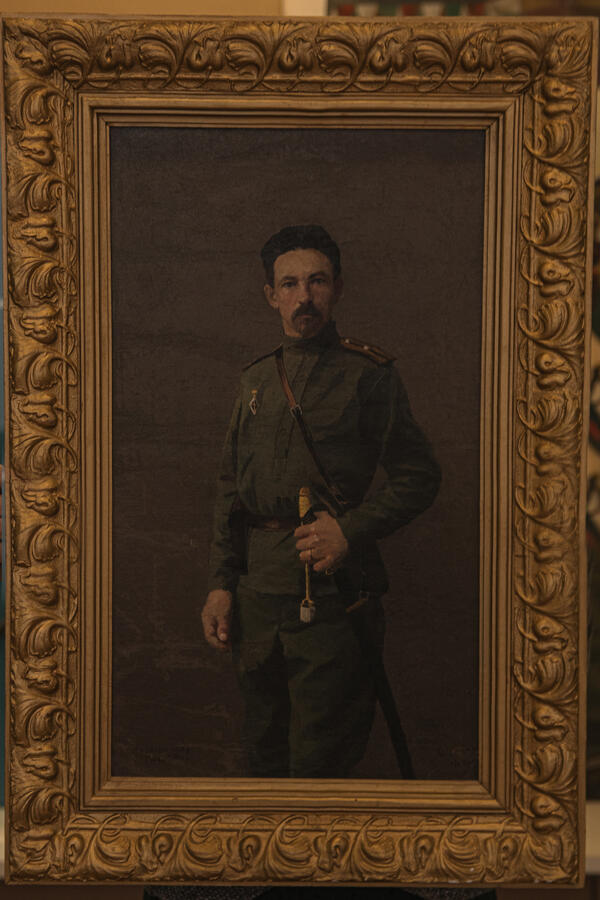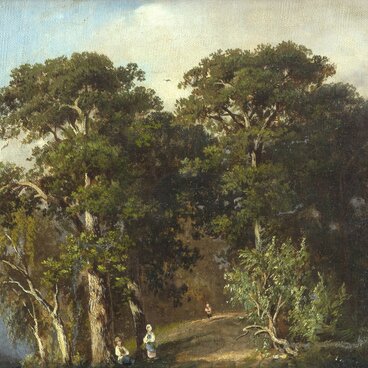Nikolay Vasilyevich Orlov is known as one of the truly folk artists of the Russian village of the late 19th — early 20th century. He belonged to the artistic group of Wanderers and his paintings are housed by several major Russian museums, such as the State Tretyakov Gallery, the State Central Museum of Contemporary History of Russia, the State Historical Museum and a number of others.
Nikolay Vasilyevich Orlov was born in 1863 in the village of Buytsy, Epifansky Uezd, Tula Governorate. The main theme of his work was the difficult life of the peasantry, which he knew firsthand, observing it from childhood. Nikolay Orlov showed great interest in drawing, and when he was 13 years old, his mother’s brother, an icon painter, took the teenager to his studio as an apprentice.
In 1882–1892, Nikolay Vasilyevich Orlov studied at the Moscow School of Painting, Sculpture and Architecture, where the famous artists Vladimir Yegorovich Makovsky, Vasily Dmitrievich Polenov, and Sergey Alekseevich Korovin were teaching at that time. From them, he adopted the traditions of the Wanderers society, and later, in 1894, he himself became a member of the Association of Traveling Art Exhibitions.
Leo Tolstoy shared the young painter’s interest in the themes the artist addressed in his paintings. In the preface to the album “Russian men. Pictures of the artist N. Orlov” Leo Tolstoy wrote: “Orlov is my favorite artist, and he is my favorite artist because the subject of his paintings is my favorite subject. This subject is the Russian people.”
The famous writer hung seven reproductions of Nikolay Orlov’s works in his office in the Yasnaya Polyana estate. In 1913, fate brought an already middle-aged, established artist to Lipetsk, where he got a job as an art teacher in a women’s gymnasium, where he worked for six years.
In 1915, at the height of the First World War, Orlov was critical of political events and was not inclined to glorify the feats of Russian soldiers and call for fighting for “faith, the tsar and the Fatherland.”
The painting “Portrait of a Military Man” (“Damned 1914”) belongs to the Lipetsk period of Orlov’s work. He portrayed a man with a university education (judging by the badge), who was drafted into the army. A stern look, a slender figure of a junior officer indicate a readiness to fulfill his duty. The prototype of the hero of this painting was one of the artist’s acquaintances in Lipetsk.
Nikolay Vasilyevich Orlov was born in 1863 in the village of Buytsy, Epifansky Uezd, Tula Governorate. The main theme of his work was the difficult life of the peasantry, which he knew firsthand, observing it from childhood. Nikolay Orlov showed great interest in drawing, and when he was 13 years old, his mother’s brother, an icon painter, took the teenager to his studio as an apprentice.
In 1882–1892, Nikolay Vasilyevich Orlov studied at the Moscow School of Painting, Sculpture and Architecture, where the famous artists Vladimir Yegorovich Makovsky, Vasily Dmitrievich Polenov, and Sergey Alekseevich Korovin were teaching at that time. From them, he adopted the traditions of the Wanderers society, and later, in 1894, he himself became a member of the Association of Traveling Art Exhibitions.
Leo Tolstoy shared the young painter’s interest in the themes the artist addressed in his paintings. In the preface to the album “Russian men. Pictures of the artist N. Orlov” Leo Tolstoy wrote: “Orlov is my favorite artist, and he is my favorite artist because the subject of his paintings is my favorite subject. This subject is the Russian people.”
The famous writer hung seven reproductions of Nikolay Orlov’s works in his office in the Yasnaya Polyana estate. In 1913, fate brought an already middle-aged, established artist to Lipetsk, where he got a job as an art teacher in a women’s gymnasium, where he worked for six years.
In 1915, at the height of the First World War, Orlov was critical of political events and was not inclined to glorify the feats of Russian soldiers and call for fighting for “faith, the tsar and the Fatherland.”
The painting “Portrait of a Military Man” (“Damned 1914”) belongs to the Lipetsk period of Orlov’s work. He portrayed a man with a university education (judging by the badge), who was drafted into the army. A stern look, a slender figure of a junior officer indicate a readiness to fulfill his duty. The prototype of the hero of this painting was one of the artist’s acquaintances in Lipetsk.




